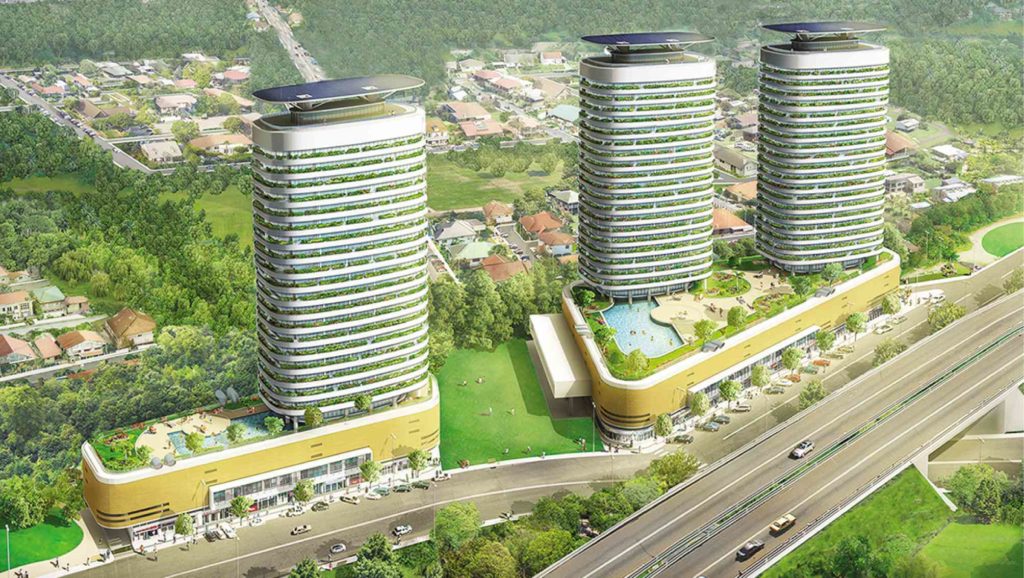Going green for PH market

The company is bent to put up “green” and livable structures, while showcasing cutting edge designs and functional form.
Anchored on a distinct Italian flair and a touch of Filipino ingenuity, Italpinas Development Corp. has sought to make a difference.
And that it did, when the company decided to create “green” and livable structures, while showcasing cutting edge designs and functional form.
“We developed the company to focus in green design building across emerging cities. We believe that it is what is missing from the Philippines’ flourishing real estate industry—developments that are responsive to environmental protection, as well as client’s needs and wants, with cutting edge design and architectural aesthetic,” Italpinas CEO Romolo V. Nati explained in an interview with Inquirer.
Incorporated in January 2009, Italpinas was born out of a meeting between Nati and the company’s current president, Jose “Jojo” D. Leviste III. The partnership took off as the collaboration between the known green designer and architect (Nati) and the conservationist and lawyer (Leviste) allowed the two to make a distinct mark in the local property scene.
Filling the gap
Article continues after this advertisementNati first gained interest in the Philippines in his early visits, during which he realized how most of the high quality and well thought out developments were concentrated mostly in Metro Manila.
Article continues after this advertisement“What I discovered first when I visited the Philippines was that most developments are concentrated in Metro Manila, while there were no big developments in other locations. Out of these observations, Italpinas’ advocacy was (meant) to fill this gap,” Nati related.
According to Nati, he and Jojo started the company from scratch, studying then the various aspects of home development. He acknowledged that at that time, they were not allowed to make mistakes, because a mistake can probably be the end of a start up company.
“At the same time, we needed to be aggressive and be brave enough to do things that nobody did before—(hence) our goals were bound to becoming the first mover of developing accessible green buildings in emerging locations and ahead of competition,” Nati shared.
“We needed to combine two things: be the first mover and mitigate risks. We worked hard to succeed. We were very persistent and consistent. Above all, we love what we are doing despite the challenges. Bringing innovation has always been our competitive advantage,” Nati further added.
Earning the trust
Nati believes that real estate is a complex industry that includes a lot of disciplines namely design, marketing, finance, construction, management, administration, and human resources. But their earnest desire to make a difference allowed them to eventually earn the trust and confidence of homebuyers and investors.
Today, Italpinas is carving a niche and is becoming one of the up and coming green developers in the country.
It has started to make a mark in the local real estate scene by delivering homes that are of high quality and which are intelligently designed, and by introducing various innovations and delivering sensible developments.
Italpinas is indeed well on its way of achieving its goal.
“We collaborated with banks and our other business partners. But the market is the best help that we have had. Clients continue to support our vision every time they choose to invest in Italpinas properties,” Nati shared. “We like to think that we are designers engaged in real estate, rather than a real estate company focused on design. Design is our strength and our unique competitive advantage.”
Italpinas now has two green projects namely Primavera Residences and Primavera City in Cagayan de Oro. Both have been awarded by prestigious global organizations such as the International Property Awards for Best Mixed-Use Developments (Primavera Residences in 2014 and Primavera City in 2017).
Primavera Residences was also granted an EDGE certification (green building certification) and was recognized by the IFC-World Bank as the first EDGE accredited condominium to be completed in East Asia.
“We innovate in real estate and use an approach called performance-based design. We make an extensive study of the conditions in the place where the building will be developed, so that we can optimize the performance of the buildings,” Nati concluded.














